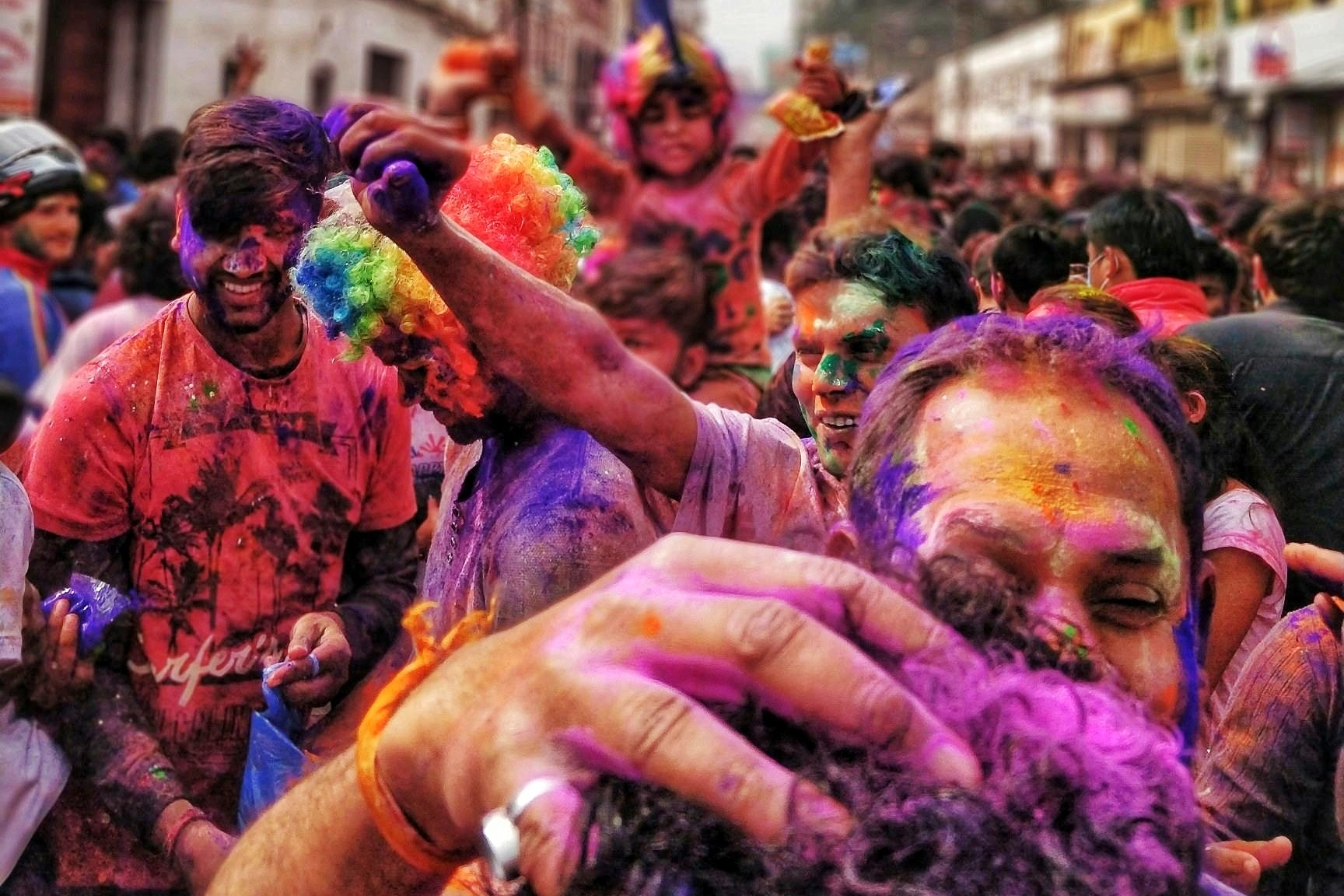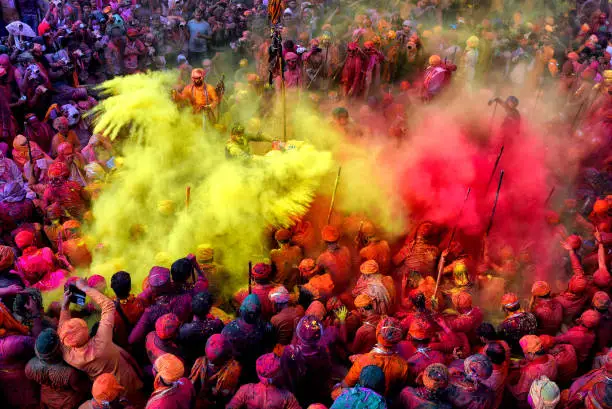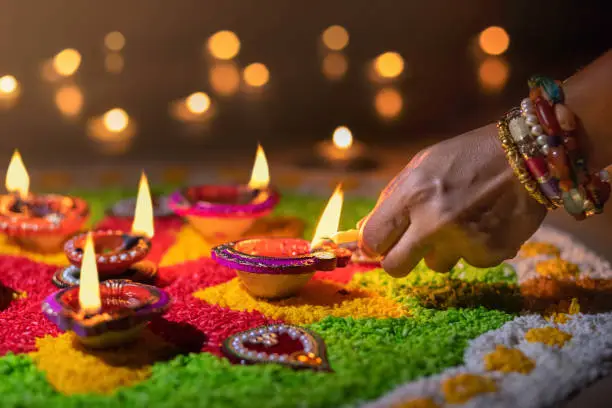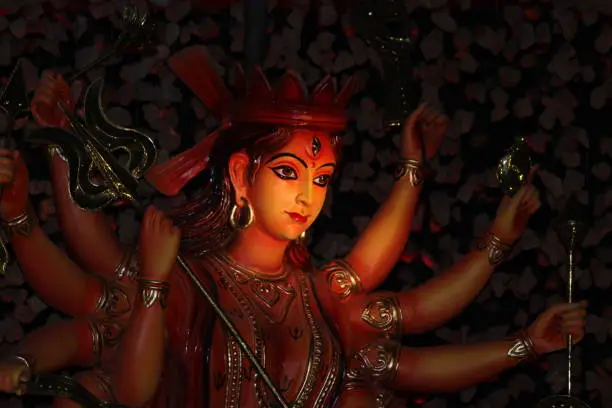
India festivals are a vibrant celebration of culture, tradition, and spirituality, reflecting the heart and soul of the nation. With its diverse communities and rich heritage, India offers a dazzling array of festivals throughout the year, each filled with colourful rituals, music, and dance. From the joyous splashes of colour during Holi to the twinkling lights of Diwali, every festival tells a unique story and invites you to experience the unity in diversity that defines this incredible country. Join us as we explore some of the most enchanting festivals in India and uncover the traditions that make them truly unforgettable.
Table of Contents
The Diversity of India’s Festivals
India’s festivals are a testament to the country’s immense cultural, religious, and regional diversity. As a secular nation with a rich heritage, India accommodates a wide array of faiths, including Hinduism, Islam, Christianity, Sikhism, Buddhism, and Jainism. Each religion contributes its unique traditions and festivals to the cultural fabric of the country.
This diversity is reflected in the many festivals celebrated throughout India. Major festivals such as Diwali, Holi, Eid, and Christmas are observed nationwide, often transcending religious and regional boundaries. For example, Diwali, celebrated as the Festival of Lights, holds special significance for Hindus, Sikhs, Buddhists, and Jains, each associating different historical and spiritual meanings with the occasion.
Regional festivals further enrich India’s cultural landscape. In Tamil Nadu, Pongal, a four-day harvest festival, marks the Tamil New Year in mid-January. In Assam, Bihu ushers in the Assamese New Year and the harvest season, accompanied by traditional dances and music. Meanwhile, Kerala’s Onam, celebrated in August, honours the mythical King Mahabali’s return and features ten days of festivities, including the famous Vallamkali snake boat races.
The spirit of inclusivity is at the heart of India’s festivals, as people from diverse backgrounds often join in each other’s celebrations. This harmony promotes social unity and reflects the syncretic nature of Indian society, where shared festivities strengthen communal bonds and foster mutual respect.
In summary, the festivals of India beautifully highlight the country’s pluralistic identity, offering a vivid glimpse into its cultural, religious, and regional richness.
Holi: The Festival of Colors

Holi, known as the “Festival of Colours,” is a vibrant Hindu celebration marking the arrival of spring and symbolising the triumph of good over evil. Observed primarily in India and Nepal, it has gained popularity worldwide, bringing communities together in joyous festivities.
Significance and Legends
Holi signifies the end of winter and the blossoming of love, serving as an invocation for a fruitful spring harvest. It embodies the victory of good over evil, rooted in various legends:
- Holika and Prahlad: According to Hindu mythology, the demon king Hiranyakashipu demanded worship from his subjects. His son, Prahlad, remained devoted to Lord Vishnu, defying his father’s wishes. In an attempt to kill Prahlad, Hiranyakashipu enlisted his sister, Holika, who possessed a boon that rendered her immune to fire. She sat with Prahlad in a blazing fire, but her boon failed due to her malicious intent, leading to her demise while Prahlad emerged unscathed. This tale symbolises the victory of devotion and righteousness over tyranny.
- Radha and Krishna: Another legend celebrates the divine love between Lord Krishna and Radha. Worried about their differing skin tones, young Krishna playfully applied colour to Radha’s face, erasing the distinction between them. This act is commemorated during Holi, emphasising love and unity beyond physical appearances.
Traditions and Celebrations
Holi is celebrated over two days:
- Holika Dahan (Chhoti Holi): On the eve of Holi, communities light bonfires to symbolise the burning away of evil spirits, reenacting Holika’s demise. People gather to sing, dance, and perform rituals around the fire, seeking blessings for prosperity and well-being.
- Rangwali Holi (Dhulandi): The following day is marked by exuberant festivities where participants smear each other with coloured powders (gulal) and drench one another with coloured water. This playful exchange fosters a sense of community and equality, as social hierarchies are temporarily set aside. Traditional songs and dances enhance the celebratory atmosphere, and festive foods like gujiya (sweet dumplings) and bhang-infused drinks are savoured.
Regional Variations
While the essence of Holi remains consistent, regional customs add unique flavours to the celebration:
- Lathmar Holi in Barsana and Nandgaon: In these Uttar Pradesh towns, women playfully beat men with sticks (lathis) as men shield themselves, reenacting a legend involving Lord Krishna and the gopis (milkmaids).
- Shigmo in Goa: Known as Shigmo, Holi in Goa blends Hindu and Christian traditions, featuring vibrant parades, traditional folk dances, and music, reflecting the state’s diverse cultural heritage.
Cultural Impact
Holi transcends religious boundaries, promoting inclusivity and social harmony. It offers an opportunity to mend broken relationships, forgive past grievances, and start anew. The festival’s joyous and unifying spirit has led to its adoption in various parts of the world, fostering cross-cultural appreciation and understanding.
In essence, Holi is a celebration of life’s vibrant hues, encouraging unity, love, and the reaffirmation of societal bonds.
Diwali: The Festival of Lights
One of the most important and extensively observed holidays in India is Diwali, often known as the “Festival of Lights.” It represents the triumph of good over evil, wisdom over ignorance, and light over darkness. Observed by millions across the country, Diwali is a time for family gatherings, prayers, feasts, and the illumination of homes with oil lamps and fireworks.

Historical and Religious Significance
Hindu mythology has a significant role in the beginning of Diwali. In northern India, it commemorates the return of Lord Rama to his kingdom after 14 years of exile, during which he defeated the demon king Ravana. To celebrate his return, the people of Ayodhya illuminated the city with oil lamps, symbolising the triumph of light over darkness.
In southern India, Diwali marks the victory of Lord Krishna over the demon Narakasura, who had terrorised the heavens and earth. After his defeat, Narakasura’s ashes were used to prepare a special paste, leading to the tradition of applying oil and bathing before sunrise on Diwali morning.
For Jains, Diwali holds special significance as it marks the enlightenment and liberation (moksha) of Lord Mahavira, the 24th Tirthankara, from the cycle of life and death. The lighting of lamps during Diwali symbolises the light of Mahavira’s holy knowledge.
Traditions and Celebrations
Diwali is celebrated over five days, each with its own set of rituals and customs:
- Dhanteras: The first day marks the beginning of Diwali and is considered auspicious for purchasing new items, especially metals like gold and silver, as it is believed to bring prosperity.
- Naraka Chaturdashi (Choti Diwali): The second day commemorates the victory of Lord Krishna over Narakasura. Devotees wake up early, apply aromatic oils, and take a ritual bath to cleanse themselves of sins.
- Diwali (Main Day): The third day is the main Diwali celebration. Families perform Lakshmi Puja, offering prayers to Goddess Lakshmi for wealth and prosperity. Homes are decorated with rangoli (colourful patterns), oil lamps (diyas), and fireworks illuminate the night sky.
- Govardhan Puja: The fourth day honours the lifting of Mount Govardhan by Lord Krishna to protect villagers from torrential rains. Devotees prepare and offer a variety of vegetarian foods, symbolising the mountain’s abundance.
- Bhai Dooj: The fifth day celebrates the bond between brothers and sisters. Sisters invite their brothers for a meal and perform aarti (a ritual of worship) for their well-being.
Regional Variations
While Diwali is celebrated nationwide, regional variations add unique flavours to the festivities:
- In Gujarat, Diwali signals the start of the new fiscal year. Businesses open new account books, and people exchange gifts and sweets.
- In Maharashtra: The day after Diwali is celebrated as Balipadyami, honouring the return of King Bali from the netherworld. People create small clay idols of King Bali and offer prayers.
- In West Bengal: Diwali coincides with the Kali Puja, which honours Goddess Kali. Temples and residences are decorated with lights, and devotees pray for blessings.
Cultural Impact
Diwali transcends religious boundaries and is celebrated by people of various faiths, including Sikhs and Buddhists, each attributing different historical and spiritual meanings to the occasion. The festival fosters a sense of community, encourages the sharing of joy, and promotes the values of kindness and generosity. In recent years, Diwali has gained international recognition, with celebrations held in various countries, reflecting the global Indian diaspora’s cultural influence.
In essence, Diwali is more than just a festival; it is a celebration of life, symbolising the dispelling of darkness and the embrace of light, knowledge, and goodness.
Navratri and Durga Puja: Celebrating Devotion and Dance
Navratri and Durga Puja are two of India’s most significant festivals, celebrated with immense devotion and cultural richness. These festivals honour the divine feminine energy, symbolizing the triumph of good over evil.

Navratri: The Nine-Night Festival
Navratri, which means “nine nights,” is a Hindu festival dedicated to the worship of Goddess Durga. It spans nine nights and ten days, during which devotees engage in fasting, prayer, and dance. Each night is associated with a different form of Goddess Durga, representing various aspects of the divine feminine. The festival concludes on the tenth day, known as Vijayadashami or Dussehra, which represents the triumph of good over evil.
Durga Puja: The Worship of Goddess Durga
Durga Puja is a major Hindu festival celebrated predominantly in West Bengal, Assam, Odisha, and Bangladesh. It commemorates the victory of Goddess Durga over the demon Mahishasura, symbolizing the triumph of good over evil. The festival involves elaborate rituals, including the creation of clay idols of Goddess Durga, which are worshipped for several days before being immersed in water.
Cultural and Spiritual Significance
Both Navratri and Durga Puja hold profound cultural and spiritual significance:
- Spiritual Significance: These festivals are times for self-reflection, spiritual purification, and seeking the blessings of Goddess Durga for strength, courage, and prosperity.
- Cultural Significance: The festivals promote unity and a sense of belonging, fostering an atmosphere of harmony and goodwill.
- Artistic Expression: The creation of intricate idols and decorations showcases India’s rich artistic heritage. Artisans craft detailed clay idols of Goddess Durga, which are then painted and adorned with vibrant colours.
- Community Bonding: The festivals bring communities together, with people participating in communal prayers, dances, and feasts, strengthening social bonds.
In essence, Navratri and Durga Puja are not just religious observances but also vibrant cultural celebrations that embody the spirit of devotion, unity, and artistic expression.
Regional Gems: Unique Festivals Across India
India’s rich cultural tapestry is woven with numerous regional festivals, each reflecting the unique traditions and heritage of its people. Beyond the widely celebrated festivals, several regional gems offer a glimpse into the diverse cultural landscape of the country.
Onam: The Harvest Festival of Kerala
Onam is a ten-day Hindu festival celebrated in Kerala, typically falling between August and September. It commemorates the homecoming of the mythical King Mahabali, whose spirit is believed to have visited Kerala during this time. The festival is marked by various cultural events, including the creation of intricate floral designs known as ‘Pookalam,’ traditional dance forms like ‘Thiruvathira,’ and the grand ‘Onasadya,’ a traditional feast served on banana leaves. Onam fosters unity and communal harmony among the people of Kerala.
Bihu: The Assamese New Year
Bihu is the most significant festival in Assam, celebrated thrice a year to mark the changing seasons. The most prominent is ‘Bohag Bihu,’ observed in April, which signifies the Assamese New Year and the arrival of spring. The festival is characterized by traditional dance forms like ‘Bihu Naach,’ where young men and women perform rhythmic dances to the beats of traditional instruments. Bihu songs, known as ‘Bihugeet,’ are also an integral part of the celebrations, reflecting the agricultural lifestyle and the joy of the season.
Pushkar Camel Fair: A Cultural Extravaganza
The Pushkar Camel Fair, held annually in Rajasthan, is one of the world’s largest camel and livestock fairs. Beyond the trading of camels, the fair is a vibrant cultural event featuring traditional music, dance, and competitions. Pilgrims also gather at the Pushkar Lake to take a holy dip, believing it cleanses them of sins. The fair offers a unique opportunity to witness the rich cultural heritage of Rajasthan, with its colourful markets, folk performances, and traditional crafts.
These regional festivals not only celebrate the unique traditions of their communities but also contribute to India’s rich cultural mosaic, offering experiences that are both diverse and enriching.
The Cultural and Spiritual Impact of India’s Festivals
India’s festivals are more than mere celebrations; they are profound expressions of the nation’s cultural and spiritual ethos. These festivals serve as vital instruments in uniting diverse communities, preserving age-old traditions, and fostering a sense of belonging among individuals.
Cultural Impact
- Preservation of Traditions: Festivals act as custodians of India’s rich cultural heritage. Through rituals, music, dance, and art forms, they ensure the transmission of traditional knowledge and practices to future generations. For instance, the intricate art of rangoli during Diwali and the classical dance performances during Navratri exemplify this cultural preservation.
- Community Bonding: Festivals provide a platform for communal interaction, bridging gaps between different social and economic groups. Events like the Kumbh Mela, which attracts millions of pilgrims, exemplify how festivals can unite people from diverse backgrounds, fostering a sense of shared identity and purpose.
Spiritual Impact
- Reinforcement of Faith: Participating in religious festivals offers individuals an opportunity to reaffirm their spiritual beliefs and practices. The communal prayers and rituals during festivals like Eid and Christmas provide a sense of spiritual fulfilment and collective devotion.
- Moral and Ethical Reflection: Many festivals are centred around narratives that impart moral lessons, encouraging individuals to reflect on virtues such as compassion, integrity, and resilience. For example, Diwali symbolizes the victory of light over darkness and good over evil, inspiring individuals to overcome personal challenges and embrace righteousness.
In essence, India’s festivals are integral to the nation’s cultural fabric and spiritual life. They not only celebrate the diversity and richness of Indian traditions but also play a pivotal role in fostering unity, preserving heritage, and nurturing the spiritual well-being of its people.
FAQ
- What are the major festivals celebrated in India?: India is home to many major festivals, including Diwali, Holi, Eid, Christmas, Navratri, and Pongal, among others. Each festival has its own significance, customs, and traditions, and is celebrated by different communities across the country.
- Why are festivals important in India?: Festivals in India are more than just celebrations; they also serve to bring communities together, preserve cultural traditions, and reaffirm religious beliefs. They promote unity, harmony, and the exchange of customs and values.
- What is the significance of Holi? Holi, or the Festival of Colours, commemorates the entrance of spring and the triumph of good over evil. It’s marked by the playful throwing of coloured powders, dancing, singing, and the enjoyment of traditional sweets.
- How is Diwali celebrated in India?: Diwali, the Festival of Lights, is celebrated by lighting oil lamps, decorating homes with colourful rangoli, bursting fireworks, and offering prayers to Goddess Lakshmi, the deity of wealth and prosperity.
- What is the significance of Navratri and Durga Puja?: Navratri is a nine-night festival dedicated to the worship of Goddess Durga, symbolizing the victory of good over evil. Durga Puja, particularly celebrated in West Bengal, marks the culmination of Navratri with grand processions, dance, and religious rituals.
- What are some lesser-known festivals in India?: Some lesser-known but culturally significant festivals include Onam (Kerala), Bihu (Assam), and the Pushkar Camel Fair (Rajasthan). Each of these festivals reflects the traditions and customs of the regions where they are celebrated.
- How do festivals impact the culture of India?: Festivals help preserve India’s diverse cultural traditions, encourage communal harmony, and strengthen spiritual ties. They play a vital role in passing down ancient practices, art forms, and stories to future generations.
Conclusion
India’s festivals are a vibrant reflection of its rich culture, diverse traditions, and deep spirituality. From the riot of colours in Holi to the shimmering lights of Diwali, each festival offers a unique window into the country’s soul. These celebrations bring together people from all walks of life, bridging differences and fostering unity. Beyond the festivities, India’s festivals serve as a reminder of the values of love, devotion, and harmony that have been passed down through generations. Whether you are exploring the streets of Kolkata during Durga Puja or experiencing the serenity of Diwali in Rajasthan, India’s festivals are an unforgettable journey into the heart of this incredible nation.
